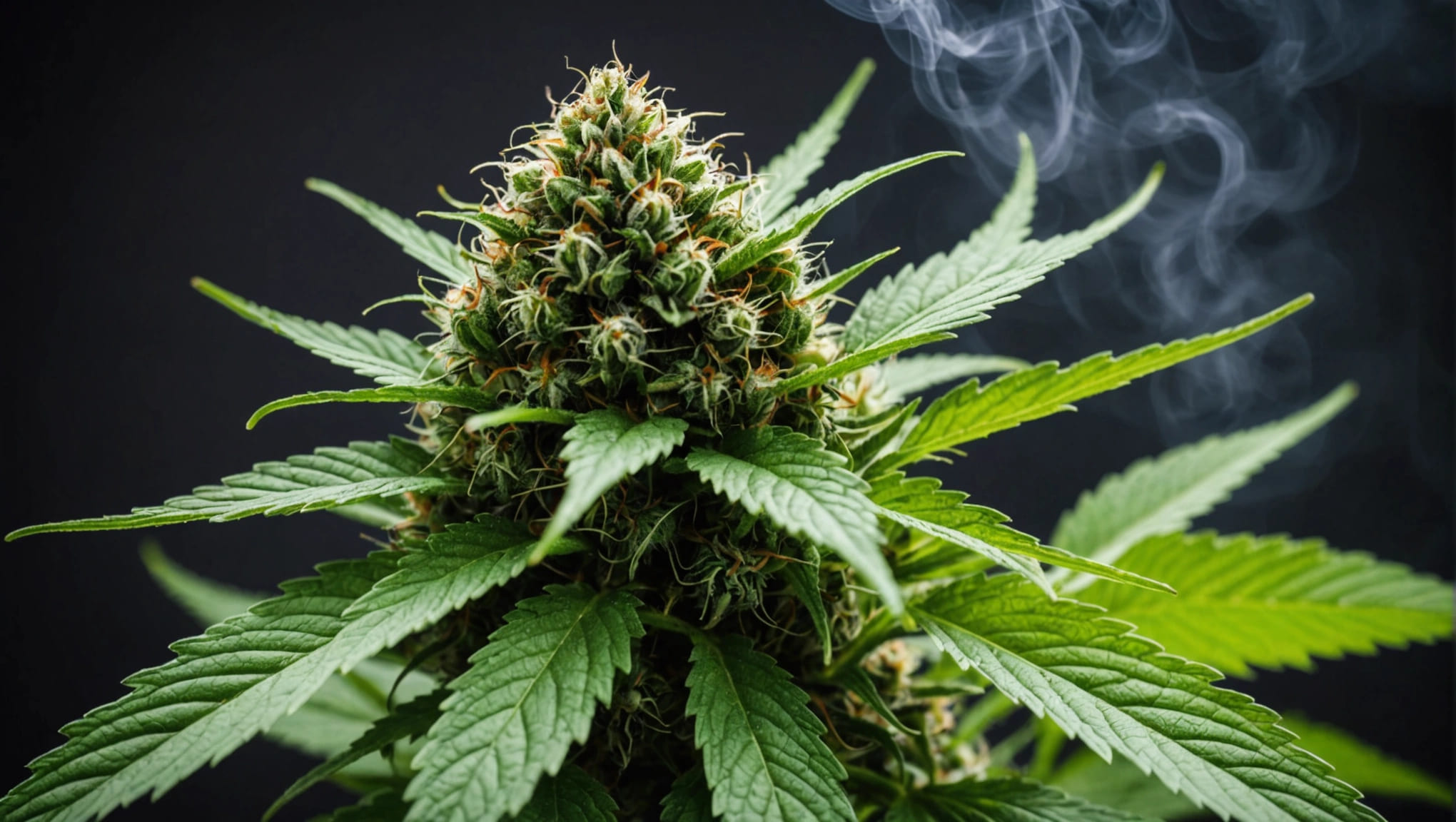Welcome to the Comprehensive Guide on Identifying and Treating Common Cannabis Diseases

Identifying and Treating Common Cannabis Diseases A Guide(1)
Welcome to the comprehensive guide on identifying and treating common cannabis diseases. As the cannabis industry continues to expand, it is crucial for cultivators to be well-versed in recognizing and addressing diseases that can affect their plants. This guide will provide you with essential knowledge and practical tips to maintain the health and vitality of your cannabis crops. From identifying symptoms such as leaf discoloration, mold growth, and pest infestations to implementing effective treatment strategies, we will cover it all. By understanding the signs of common cannabis diseases early on, you can take proactive measures to protect your plants and ensure a successful harvest. Whether you are a seasoned grower or just starting out, this guide will equip you with the necessary tools to promote a thriving cannabis garden. Let’s dive in and empower ourselves to cultivate healthy and robust cannabis plants.
Common Cannabis Diseases
Cannabis plants are susceptible to various diseases that can significantly impact their growth and overall health. In this section, we will explore some of the most common diseases that affect cannabis plants and discuss their symptoms, causes, and treatment options.
Powdery Mildew
Powdery mildew is a fungal disease that often appears as a white powdery substance on the leaves and stems of cannabis plants. It thrives in warm, humid conditions and can spread rapidly if not addressed promptly. Symptoms of powdery mildew include white spots on the plant’s surface, distorted leaves, and stunted growth. To prevent powdery mildew, ensure proper air circulation around the plants, maintain moderate humidity levels, and avoid overcrowding. Treatment options include removing and destroying affected plant parts, applying fungicides, and adjusting environmental conditions.
Bud Rot
Bud rot, also known as botrytis, is a common fungal disease that affects the buds of cannabis plants. It typically occurs in damp or humid conditions and can quickly spread throughout a plant if left unchecked. Symptoms of bud rot include moldy or decaying buds, a foul odor, and discolored patches on the flowers. To prevent bud rot, maintain proper ventilation in the growing area, avoid overwatering, and regularly inspect plants for signs of infection. Treatment may involve carefully removing affected buds, improving air circulation, and applying fungicides.
Root Rot
Root rot is a serious condition caused by waterlogged soil or overwatering, which leads to the decay of the plant’s roots. Cannabis plants with root rot may exhibit wilting, yellowing leaves, and stunted growth. To prevent root rot, ensure proper drainage in the growing medium, water plants appropriately, and avoid compacted soils. Treatment options for root rot include adjusting watering practices, improving soil aeration, and using beneficial microbes to restore root health.
Spider Mites
Spider mites are tiny pests that feed on the sap of cannabis plants, causing damage to the leaves and reducing overall plant vigor. Signs of a spider mite infestation include yellow or stippled leaves, webbing on the plant’s surface, and decreased plant growth. To control spider mites, regularly inspect plants for signs of infestation, maintain a clean growing environment, and consider using predatory insects or insecticidal soaps. Prevention is key to managing spider mites, so implement integrated pest management strategies and avoid introducing infested plants into your growing space.
By understanding the symptoms and treatment options for common cannabis diseases like powdery mildew, bud rot, root rot, and spider mites, growers can take proactive measures to protect their plants and ensure a healthy harvest.
Identification and Symptoms
Visual Symptoms and Signs of Common Cannabis Diseases.
- Powdery Mildew: Recognizing the White Powdery Spots
- Botrytis (Bud Rot): Identifying the Gray Mold on Buds
- Root Rot: Noticing Wilting Leaves and Stunted Growth
- Fusarium Wilt: Yellowing and Wilting of Leaves
- Alternaria Leaf Spot: Brown Spots with Yellow Halos on Leaves
How to Identify Cannabis Diseases
- Powdery Mildew: Look for Powdery White Spots, Especially on Leaves and Buds
- Botrytis (Bud Rot): Check for Gray Mold on Buds, Often with a Musty Smell
- Root Rot: Observing Yellowing Leaves, Wilting, and Dark, Slimy Roots
- Fusarium Wilt: Notice Yellowing Leaves and Wilting, Often Starting from the Bottom
- Alternaria Leaf Spot: Identify Circular Brown Spots with Yellow Rings on Leaves
Differentiating Between Cannabis Diseases
- Analyze Patterns: Note the Distribution and Shape of Spots or Symptoms
- Inspect Under Leaves: Look for Insects, Eggs, or Webbing Indicating Pests
- Consider Environment: Evaluate Moisture Levels, Temperature, and Air Circulation
- Professional Consultation: Seek Advice from Experienced Growers or Plant Pathologists for Accurate Diagnosis
- Treatment Options: Research and Implement Suitable Treatments for Specific Diseases
By understanding the visual cues and applying proper identification techniques, growers can effectively diagnose and treat common cannabis diseases, ensuring the health and vitality of their plants.
In addition to visual symptoms, early detection is crucial in managing cannabis diseases. Growers should regularly inspect their plants for any signs of distress, such as discoloration, wilting, or abnormal growth patterns. Timely intervention can prevent the spread of diseases and minimize crop damage.
Furthermore, maintaining optimal growing conditions is essential for preventing disease development. Proper air circulation, humidity control, and sanitation practices can help create an environment less conducive to pathogens. Additionally, using disease-resistant cultivars and practicing crop rotation can reduce the risk of infections.
Educating oneself on integrated pest management techniques can also aid in disease prevention. Implementing cultural practices like proper watering schedules, balanced nutrition, and regular plant monitoring can strengthen plant immunity and resilience against diseases.
Remember, effective disease management is a combination of proactive measures, keen observation, and prompt action. By staying vigilant and informed, growers can safeguard their cannabis crops and promote a thriving cultivation environment.
Preventive Measures
Essential Tips for Preventing Cannabis Diseases
Cannabis cultivation comes with its own set of challenges, and one of the critical aspects that growers need to focus on is disease prevention. Diseases can wreak havoc on cannabis plants, affecting their growth, yield, and overall health. To ensure a successful harvest, it is vital to implement preventive measures that mitigate the risk of disease outbreaks. Let’s delve into some key strategies:.
- Maintain Optimal Environmental Conditions: Creating a conducive environment for your cannabis plants is crucial in preventing diseases. Ensure proper temperature, humidity, and light levels to promote plant health and resilience against pathogens.
- Implement Integrated Pest Management (IPM) Practices: IPM involves using a combination of cultural, biological, and mechanical controls to manage pests and diseases effectively. By integrating IPM strategies, you can minimize the reliance on chemical treatments and reduce the likelihood of developing pesticide resistance.
- Utilize Beneficial Microorganisms: Beneficial microorganisms, such as mycorrhizal fungi and beneficial bacteria, play a significant role in enhancing plant immunity and outcompeting harmful pathogens. Consider inoculating your soil with these beneficial microbes to boost plant defenses.
- Regularly Conduct Soil Tests: Soil health directly impacts plant health. Periodic soil testing helps you assess nutrient levels, pH balance, and potential disease risks. Adjusting your cultivation practices based on soil test results can prevent nutrient deficiencies and imbalances that make plants more susceptible to diseases.
Significance of Disease-Resistant Seed Varieties
Choosing the right seed varieties is a fundamental step in disease prevention. Opting for disease-resistant strains provides an added layer of protection against common cannabis pathogens. Here’s why selecting disease-resistant seeds is crucial:.
- Enhanced Crop Resilience: Disease-resistant varieties are bred to exhibit natural resistance mechanisms against prevalent pathogens, ensuring that your plants can withstand disease pressures more effectively.
- Reduced Need for Chemical Treatments: By planting disease-resistant seeds, you can reduce the reliance on chemical pesticides and fungicides, promoting a more sustainable and eco-friendly growing approach.
- Improved Crop Quality and Yield: Disease-resistant strains not only protect plants from diseases but also contribute to improved overall plant vigor, leading to higher-quality yields and better crop performance.
When sourcing disease-resistant seeds, consider factors such as genetic stability, disease spectrum coverage, and compatibility with your growing environment. By incorporating these tips into your cultivation practices, you can proactively safeguard your cannabis crop and ensure a successful and bountiful harvest. Remember, prevention is key to maintaining a thriving and disease-free garden.
Treatment Options
Exploring the World of Pest Treatments
In the ongoing battle against pesky invaders, understanding the variety of treatment options available is crucial for effective pest management. From organic remedies to chemical solutions, knowing when to DIY and when to call in the professionals can make all the difference in protecting your home.
Embracing Organic Treatments
Harnessing Nature’s Defense Mechanisms.
Organic treatments offer a holistic approach to pest control, utilizing natural ingredients like essential oils, plant extracts, and beneficial microorganisms to repel and deter pests. These eco-friendly solutions not only target pests but also promote a healthier environment by avoiding the use of harsh chemicals. Whether it’s using diatomaceous earth for crawling insects or introducing beneficial nematodes to combat garden pests, organic treatments provide a sustainable and non-toxic alternative for pest management.
Understanding Chemical Treatments
Delving Into the Science of Pest Control.
Chemical treatments, while more potent, can be highly effective in eradicating stubborn pest infestations. By targeting pests at their source with synthetic compounds, chemical treatments offer a rapid solution to pest problems. However, it’s essential to follow application guidelines meticulously and prioritize safety to prevent unintended harm to non-target organisms and the environment. From residual insecticides for long-term control to fumigation methods for severe infestations, chemical treatments require careful consideration and expert handling.
Knowing When to Seek Professional Help
Recognizing the Signs of a Pest Emergency.
While DIY pest control can address minor issues, some situations demand professional intervention. Signs such as persistent infestations, property damage, or health risks indicate the need for specialized pest management services. Pest control experts possess the knowledge, experience, and tools to assess the severity of infestations, implement targeted treatments, and prevent future pest incursions effectively. Don’t hesitate to seek professional help when faced with complex pest challenges to safeguard your home and family.
For personalized pest management strategies and expert advice, consult with licensed professionals who can offer tailored solutions to protect your property and ensure a pest-free environment.
Conclusion
It is essential for cannabis growers to be vigilant and proactive in identifying and treating common cannabis diseases. By regularly inspecting plants, maintaining proper growing conditions, and promptly addressing any signs of disease, growers can protect their crops and ensure a successful harvest. Remember, prevention is key when it comes to combating cannabis diseases, so staying informed and implementing preventive measures can go a long way in maintaining a healthy and thriving crop.









